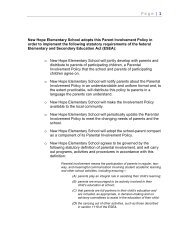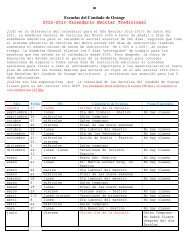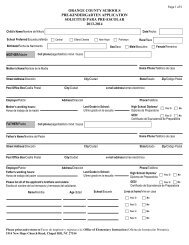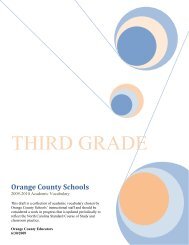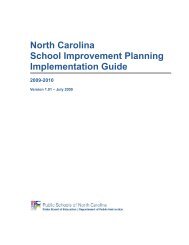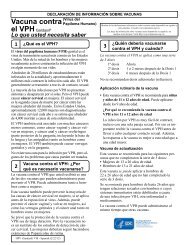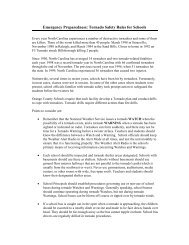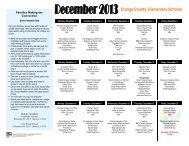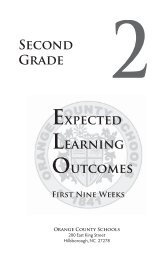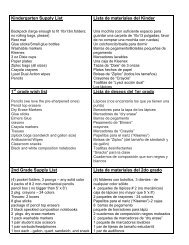Closing the Achievement Gap - Washington State School Directors ...
Closing the Achievement Gap - Washington State School Directors ...
Closing the Achievement Gap - Washington State School Directors ...
Create successful ePaper yourself
Turn your PDF publications into a flip-book with our unique Google optimized e-Paper software.
The Task Force also recognizes that o<strong>the</strong>r factors have significant effects onstudent learning that contribute to <strong>the</strong> achievement gap. One of <strong>the</strong> mostsignificant factors is language. Evidence exists to show that schools withhigher percentages of English language learners (ELL) have lower achievementrates, just as schools with higher percentages of students qualifyingfor free or reduced-price lunch have lower achievement rates. Districtsthroughout <strong>Washington</strong> are working to increase <strong>the</strong> achievement of Englishlanguage learners, and this guide addresses <strong>the</strong> need to improve thoseefforts as part of <strong>the</strong> gap closing strategy.Evidence of <strong>the</strong> <strong>Achievement</strong> <strong>Gap</strong>“The differential achievement of poor and ethnically diverse students iswell documented and spans all grade levels.” (Poverty and Race ResearchAction Council, 2001). The achievement gap exists in school districts andschools across <strong>Washington</strong> and <strong>the</strong> nation and is not restricted to onlythose districts or schools with high percentages of students of color orstudents from low-income families. The data in this section serve to highlightwhat many already know—achievement gaps have existed for a longtime and show no sign of disappearing.According to <strong>the</strong> National Assessment of Educational Progress (NAEP), <strong>the</strong>test scores for <strong>the</strong> nation’s highest performing students have risen by threescale points since 1992, while <strong>the</strong> test scores of <strong>the</strong> nation’s lowest performingstudents have declined by seven scale points, causing <strong>the</strong> achievementgap to widen. According to <strong>the</strong> 2000 NAEP data, overall scores inreading and math increased; however, <strong>the</strong> differences between black andwhite students have increased in every subject area and every agegroup. The data also shows that <strong>the</strong> gap in test scores between whiteand black students persisted even when socio-economic status, levelof parent education and o<strong>the</strong>r factors were controlled.In <strong>Washington</strong>, <strong>the</strong> gap between whites and Asians and o<strong>the</strong>r ethnic groupsexists in most subjects and grades. According to <strong>the</strong> Office of Superintendentof Public Instruction (OSPI) data as presented to <strong>the</strong> Ad Hoc <strong>Achievement</strong><strong>Gap</strong> Task Force by Peter Bylsma, Director of Research and Evaluation:White students have higher performance levels than all minoritygroups except for Asians in 7th grade ma<strong>the</strong>matics.The performance of Asian students is fairly close to whites.Black, Hispanic and American Indian students have made lessprogress than whites or Asians.Whites and Asians have had about <strong>the</strong> same level of reduction in <strong>the</strong>percent of students not meeting standards.Black, Hispanic and American Indian students have made lessprogress in reducing <strong>the</strong> percent of students not meeting standards.8CLOSING THE ACHIEVEMENT GAP: A POLICY ACTION GUIDE




